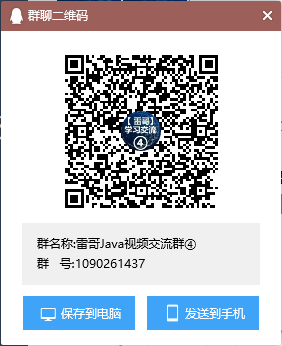前言
对于Node开发者来说,非阻塞异步编程是他们引以为傲的地方。而在JDK8中,也引入了非阻塞异步编程的概念。所谓非阻塞异步编程,就是一种不需要等待返回结果的多线程的回调方法的封装。使用非阻塞异步编程,可以很大程度上解决高并发场景的各种问题,提高程序的运行效率。
为什么要使用非阻塞异步编程
在jdk8之前,我们使用java的多线程编程,一般是通过Runnable中的run方法进行的。这种方法有个明显的缺点:没有返回值。这时候,大家会使用Callable+Future的方式去实现,代码如下。
public static void main(String[] args) throws Exception {
ExecutorService executor = Executors.newSingleThreadExecutor();
Future<String> stringFuture = executor.submit(new Callable<String>() {
@Override
public String call() throws Exception {
Thread.sleep(2000);
return "async thread";
}
});
Thread.sleep(1000);
System.out.println("main thread");
System.out.println(stringFuture.get());
}这无疑是对高并发访问的一种缓冲方法。这种方式有一个致命的缺点就是阻塞式调用,当调用了get方法之后,会有大量的时间耗费在等待返回值之中。
不管怎么看,这种做法貌似都不太妥当,至少在代码美观性上就看起来很蛋疼。而且某些场景无法使用,比如:
- 多个异步线程执行时间可能不一致,我们的主线程不能一直等着。
- 两个异步任务之间相互独立,但是第二个依赖第一个的执行结果
在这种场景下,CompletableFuture的优势就展现出来了 。同时,CompletableFuture的封装中使用了函数式编程,这让我们的代码显得更加简洁、优雅。
不了解函数式编程的朋友,可以参考我之前的博客。JDK8新特性
CompletableFuture使用详解
runAsync和supplyAsync方法
CompletableFuture提供了四个静态方法来创建一个异步操作。
public static CompletableFuture<Void> runAsync(Runnable runnable)
public static CompletableFuture<Void> runAsync(Runnable runnable, Executor executor)
public static <U> CompletableFuture<U> supplyAsync(Supplier<U> supplier)
public static <U> CompletableFuture<U> supplyAsync(Supplier<U> supplier, Executor executor)没有指定Executor的方法会使用ForkJoinPool.commonPool() 作为它的线程池执行异步代码。如果指定线程池,则使用指定的线程池运行。以下所有的方法都类同。
- runAsync方法不支持返回值。
- supplyAsync可以支持返回值。
代码示例
/**
* 无返回值
*
* @throws Exception
*/
@Test
public void testRunAsync() throws Exception {
CompletableFuture<Void> future = CompletableFuture.runAsync(() -> {
try {
TimeUnit.SECONDS.sleep(1);
} catch (Exception ignored) {
}
System.out.println("run end ...");
});
future.get();
}
/**
* 有返回值
*
* @throws Exception
*/
@Test
public void testSupplyAsync() throws Exception {
CompletableFuture<Long> future = CompletableFuture.supplyAsync(() -> {
System.out.println("run end...");
return System.currentTimeMillis();
});
Long time = future.get();
System.out.println(time);
}计算结果完成时的回调方法
当CompletableFuture的计算结果完成,或者抛出异常的时候,可以执行特定的操作。
public CompletableFuture<T> whenComplete(BiConsumer<? super T,? super Throwable> action)
public CompletableFuture<T> whenCompleteAsync(BiConsumer<? super T,? super Throwable> action)
public CompletableFuture<T> whenCompleteAsync(BiConsumer<? super T,? super Throwable> action, Executor executor)
public CompletableFuture<T> exceptionally(Function<Throwable,? extends T> fn)这里需要说的一点是,whenComplete和whenCompleteAsync的区别。
- whenComplete:使用执行当前任务的线程继续执行whenComplete的任务。
- whenCompleteAsync:使用新的线程执行任务。
- exceptionally:执行出现异常时,走这个方法。
代码示例
/**
* 当CompletableFuture的计算结果完成,或者抛出异常的时候,可以执行特定的Action。
* whenComplete:是执行当前任务的线程执行继续执行 whenComplete 的任务。
* whenCompleteAsync:是执行把 whenCompleteAsync 这个任务继续提交给线程池来进行执行。
* exceptionally:执行出现异常时,走这个方法
*
* @throws Exception
*/
@Test
public void testWhenComplete() throws Exception {
CompletableFuture.runAsync(() -> {
try {
TimeUnit.SECONDS.sleep(1);
} catch (InterruptedException e) {
e.printStackTrace();
}
System.out.println("运行结束");
}).whenComplete((t, action) -> {
System.out.println("执行完成");
}).exceptionally(t -> {
System.out.println("出现异常:" + t.getMessage());
return null;
});
TimeUnit.SECONDS.sleep(2);
}thenApply
当一个线程依赖另一个线程时,可以使用thenApply方法把这两个线程串行化,第二个任务依赖第一个任务的返回值。
代码示例
/**
* 当一个线程依赖另一个线程时,可以使用 thenApply 方法来把这两个线程串行化。
* 第二个任务依赖第一个任务的结果
*
* @throws Exception
*/
@Test
public void testThenApply() throws Exception {
CompletableFuture<Long> future = CompletableFuture.supplyAsync(() -> {
long result = new Random().nextInt();
System.out.println("result:" + result);
return result;
}).thenApply(t -> {
long result = t * 5;
System.out.println("result2:" + result);
return result;
});
Long result = future.get();
System.out.println(result);
}handle
handle是执行任务完成时对结果的处理。与thenApply方法处理方式基本一致,
不同的是,handle是在任务完成后执行,不管这个任务是否出现了异常,而thenApply只可以执行正常的任务,任务出现了异常则不执行。
代码示例
/**
* handle 是执行任务完成时对结果的处理。
* handle 方法和 thenApply 方法处理方式基本一样。
* 不同的是 handle 是在任务完成后再执行,还可以处理异常的任务。
* thenApply 只可以执行正常的任务,任务出现异常则不执行 thenApply 方法。
*
* @throws Exception
*/
@Test
public void testHandle() throws Exception {
CompletableFuture<Integer> future = CompletableFuture.supplyAsync(() -> {
int i = 10 / 0;
return i;
}).handle((p, t) -> {
int result = -1;
if (t == null) {
result = p * 2;
} else {
System.out.println(t.getMessage());
}
return result;
});
System.out.println(future.get());
}thenAccept
thenAccept用于接收任务的处理结果,并消费处理,无返回结果。
代码示例
/**
* 接收任务的处理结果,并消费处理,无返回结果。
*
* @throws Exception
*/
@Test
public void testThenAccept() throws Exception {
CompletableFuture<Void> future = CompletableFuture.supplyAsync(() -> {
return new Random().nextInt();
}).thenAccept(num -> {
System.out.println(num);
});
System.out.println(future.get());
}thenRun
上个任务执行完之后再执行thenRun的任务,二者只存在先后执行顺序的关系,后者并不依赖前者的计算结果,同时,没有返回值。
代码示例
/**
* 该方法同 thenAccept 方法类似。不同的是上个任务处理完成后,并不会把计算的结果传给 thenRun 方法。
* 只是处理玩任务后,执行 thenRun 的后续操作。
*
* @throws Exception
*/
@Test
public void testThenRun() throws Exception {
CompletableFuture<Void> future = CompletableFuture.supplyAsync(() -> {
return new Random().nextInt();
}).thenRun(() -> {
System.out.println("进入了thenRun");
});
System.out.println(future.get());
}thenCombine
thenCombine会把两个CompletableFuture的任务都执行完成后,把两个任务的返回值一块交给thenCombine处理(有返回值)。
代码示例
/**
* thenCombine 会把 两个 CompletableFuture 的任务都执行完成后
* 把两个任务的结果一块交给 thenCombine 来处理。
*
* @throws Exception
*/
@Test
public void testThenCombine() throws Exception {
CompletableFuture<String> future = CompletableFuture.supplyAsync(() -> {
return "hello";
}).thenCombine(CompletableFuture.supplyAsync(() -> {
return "world";
}), (t1, t2) -> {
return t1 + " " + t2;
});
System.out.println(future.get());
}thenAcceptBoth
当两个CompletableFuture都执行完成后,把结果一块交给thenAcceptBoth处理(无返回值)
代码示例
/**
* 当两个 CompletableFuture 都执行完成后
* 把结果一块交给thenAcceptBoth来进行消耗
*
* @throws Exception
*/
@Test
public void testThenAcceptBoth() throws Exception {
CompletableFuture<Void> future = CompletableFuture.supplyAsync(() -> {
return "hello";
}).thenAcceptBoth(CompletableFuture.supplyAsync(() -> {
return "world";
}), (t1, t2) -> {
System.out.println(t1 + " " + t2);
});
System.out.println(future.get());
}applyToEither
两个CompletableFuture,谁执行返回的结果快,就用哪个的结果进行下一步操作(有返回值)。
代码示例
/**
* 两个CompletableFuture,谁执行返回的结果快,我就用那个CompletionStage的结果进行下一步的转化操作
*
* @throws Exception
*/
@Test
public void testApplyToEither() throws Exception {
CompletableFuture<String> future = CompletableFuture.supplyAsync(() -> {
try {
Thread.sleep(2);
} catch (InterruptedException e) {
e.printStackTrace();
}
return "hello";
}).applyToEither(CompletableFuture.supplyAsync(() -> {
return "world";
}), (t) -> {
return t;
});
System.out.println(future.get());
}acceptEither
两个CompletableFuture,谁执行返回的结果快,就用哪个的结果进行下一步操作(无返回值)。
代码示例
/**
* 两个CompletableFuture,谁执行返回的结果快,我就用那个CompletionStage的结果进行下一步的消耗操作。
*
* @throws Exception
*/
@Test
public void testAcceptEither() throws Exception {
CompletableFuture<Void> future = CompletableFuture.supplyAsync(() -> {
return "hello";
}).acceptEither(CompletableFuture.supplyAsync(() -> {
return "world";
}), t1 -> {
System.out.println(t1);
});
System.out.println(future.get());
}runAfterEither
两个CompletableFuture,任何一个完成了都会执行下一步操作
代码示例
/**
* 两个CompletableFuture,任何一个完成了都会执行下一步的操作
*
* @throws Exception
*/
@Test
public void testRunAfterEither() throws Exception {
CompletableFuture<Void> future = CompletableFuture.supplyAsync(() -> {
return "hello";
}).runAfterEither(CompletableFuture.supplyAsync(() -> {
return "world";
}), () -> {
System.out.println("执行完了");
});
System.out.println(future.get());
}runAfterBoth
两个CompletableFuture,都完成了才会执行下一步操作。
代码示例
/**
* 两个CompletableFuture,都完成了计算才会执行下一步的操作
*
* @throws Exception
*/
@Test
public void testRunAfterBoth() throws Exception {
CompletableFuture<Void> future = CompletableFuture.supplyAsync(() -> {
return "hello";
}).runAfterBoth(CompletableFuture.supplyAsync(() -> {
return "world";
}), () -> {
System.out.println("执行完了");
});
System.out.println(future.get());
}thenCompose
thenCompose方法允许对两个CompletableFuture进行流水线操作,当第一个操作完成时,将其结果作为参数传递给第二个操作。
代码示例
/**
* thenCompose 方法允许你对两个 CompletableFuture 进行流水线操作,
* 第一个操作完成时,将其结果作为参数传递给第二个操作。
* @throws Exception
*/
@Test
public void testThenCompose() throws Exception {
CompletableFuture<Integer> future = CompletableFuture.supplyAsync(() -> {
int t = new Random().nextInt();
System.out.println(t);
return t;
}).thenCompose(param -> {
return CompletableFuture.supplyAsync(() -> {
int t = param * 2;
System.out.println("t2=" + t);
return t;
});
});
System.out.println(future.get());
}结语
CompletableFuture是jdk8中新增的一个特性,特点是非阻塞异步编程。合理的使用非阻塞异步编程,比如将两步关联不大的操作并行处理,可以优化代码的执行效率。同时,在高并发场景下,CompletableFuture也可以进行有效的性能优化。
如果你觉得该博客对你有帮助,不放动动手指加一下交流群。


来源:oschina
链接:https://my.oschina.net/u/4386395/blog/3231038
